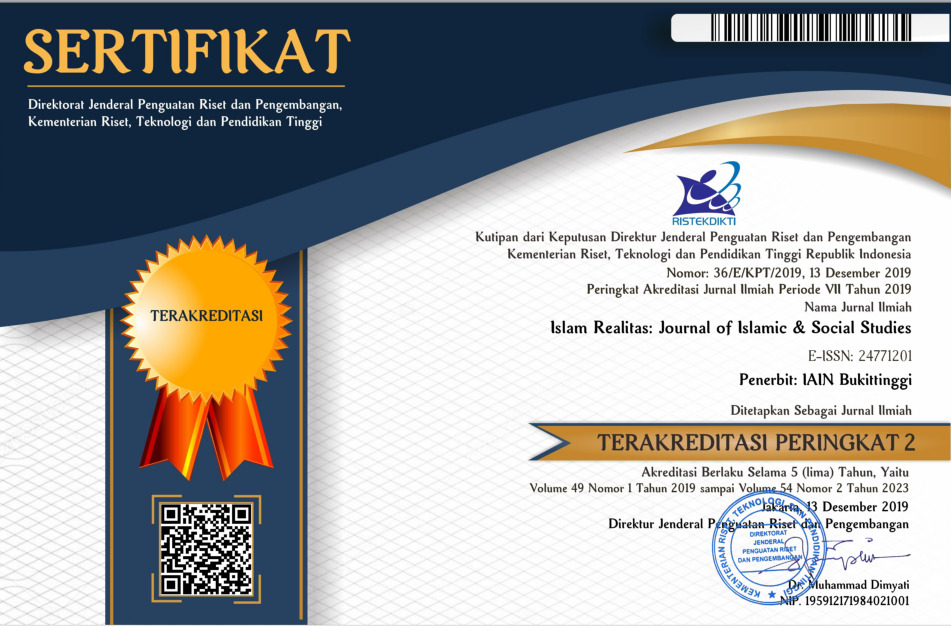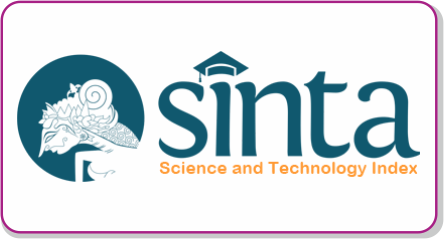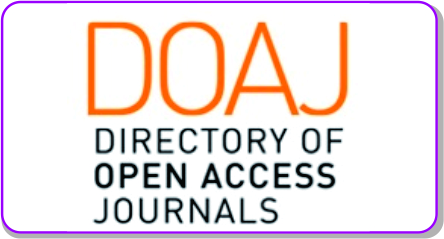Interspecies Kinship of Liuran: Rethinking Marshall Sahlins’s Mutuality of Being
DOI:
https://doi.org/10.30983/fuaduna.v7i2.7283Keywords:
Liuran, mutuality of being, multispecies, kinshipAbstract
The anthropological discussions regarding the concept of mutuality of being by Marshal Sahlins have focused on the idea that kinship only occurs between humans through certain rituals or traditions. This idea is limited in considering non-human species that also potentially form interspecies kinship. Through a multispecies ethnographic approach, this article discusses interspecies kinship in the context of joint agricultural care without exchanging exact amount of payment (liuran) by female farmers in Kampung Laut District, Cilacap Regency, Indonesia. In this study, the data were collected through participant observation techniques and in-depth interviews with four female farmers as key informants who have been involved in liuran for years. The findings showed that the interspecies kinship between female farmers and rice and garden crops is like mother and child because there has been an emotional-ecological bond in the process of caring for sedimentation farming over decades, primarily through taboo practices. The process of caring for rice and garden plants together also forms a socio-economic support system among female farmers, which helps strengthen their interspecies kinship. Considering non-human species as part of the family members places them in an equal relationship with humans in contributing to the sustainability of living ecosystems.
References
Chudakova, T. (2017). Plant matters: Buddhist medicine and economies of attention in postsocialist Siberia. American Ethnologist, 44(2), 341–354. https://doi.org/10.1111/amet.12483
Descola, P. (2012). Beyond nature and culture. HAU: Journal of Ethnographic Theory, 2(1), 447–471. https://doi.org/10.14318/hau2.1.020
Fuentes, A. (2020). Commentary: Other Animals as Kin and Persons Worthy of Increased Ethical Consideration. Cambridge Quarterly of Healthcare Ethics, 29(1), 38–41. https://doi.org/10.1017/S0963180119000744
Haraway, D. J. (2003). The Companion Species Manifesto: Dogs, People, and Significant Otherness (vol. 1). Prickly Paradigm Press Chicago.
Haraway, D. J. (2013). When Species Meet (Vol. 3). University of Minnesota Press.
Kirksey, S. E., & Helmreich, S. (2010). The Emergence of Multispecies Ethnography. Cultural Anthropology, 25(4), 545–576. https://doi.org/10.1111/j.1548-1360.2010.01069.x
McIntyre-Mills, J. J. (2021). From Polarisation to Multispecies Relationships: Re-Membering Narratives. In: McIntyre-Mills, J.J., Corcoran-Nantes, Y. (eds) From Polarisation to Multispecies Relationships. In Contemporary Systems Thinking (pp. 173–212). Springer Singapore. https://doi.org/10.1007/978-981-33-6884-2_10
Meijer, E. (2019). Animal Languages: The Secret Conversations of the Living World. Hachette UK.
Mulyadi, S. (2013). Kisah Pergulatan Peradaban Suku Pejagan dalam Sejarah Ingatan Kampung Laut. Yayasan Sosial Bina Sejahtera.
Nagel, T. (2006). “What Is It like to Be a Bat?,.†Theories of Mind: An Introductory Reader.
Nathen, T. (2018). “Being attentiveâ€: exploring other-than-human agency in medicinal plants through everyday Rastafari plant practices. Anthropology Southern Africa, 41(2), 115–126. https://doi.org/10.1080/23323256.2018.1468720
Robbins, J. (2013). On kinship and comparsion, intersubjectivity and mutuality of being. HAU: Journal of Ethnographic Theory, 3(2), 309–316. https://doi.org/10.14318/hau3.2.022
Romm, N. R. A., & Lethole, P. V. (2021). Prospects for Sustainable Living with Focus on Interrelatedness, Interdependence and Mutuality: Some African Perspectives (pp. 87–114). https://doi.org/10.1007/978-981-33-6884-2_6
Sahlins, M. (2013). What Kinship Is-and Is Not. University of Chicago Press.
Sanjatmiko, P. (2016). Common Property di Tengah Perubahan Bentang Alam Kawasan Segara Anakan. Departemen Antropologi UI.
Sanjatmiko, P., & Hardiah, S. (2022). The tragedy of the open society and COVID-19 pandemic: local community resistance to neoliberal hegemony (A multispecies ethnography). Journal of Applied Communication Research, 50(5), 459–477. https://doi.org/10.1080/00909882.2022.2123250
Seigworth, G. J., & Gregg, M. (2010). An Inventory of Shimmers. In The Affect Theory Reader (pp. 1–26). Duke University Press. https://doi.org/10.1515/9780822393047-002
Serpell, J. (1996). In the Company of Animals: A Study of Human-Animal Relationships. Cambridge University Press.
Shryock, A. (2013). It’s this, not that. HAU: Journal of Ethnographic Theory, 3(2), 271–279. https://doi.org/10.14318/hau3.2.016
Stasch, R. (2009). Society of Others: Kinship and Mourning in a West Papuan Place. Univ of California Press.
van Dooren, T., Kirksey, E., & Münster, U. (2016). Multispecies Studies: Cultivating Arts of Attentiveness. Environmental Humanities, 8(1), 1–23. https://doi.org/10.1215/22011919-3527695
Interview
Ani. Interview with Female farmer, January 26, 2019
Warni. Interview with Female farmer, January 19, 2019
Wati. Interview with Female farmer, January 20, 2019
Yana. Interview with Female farmer, January 21, 2019
Downloads
Submitted
Accepted
Published
Issue
Section
License
Authors who publish with this journal agree to the following terms:
- Authors retain copyright and grant the journal right of first publication with the work simultaneously licensed under a Creative Commons Attribution-ShareAlike 4.0. that allows others to share the work with an acknowledgment of the work's authorship and initial publication in this journal.
- Authors are able to enter into separate, additional contractual arrangements for the non-exclusive distribution of the journal's published version of the work (e.g., post it to an institutional repository or publish it in a book), with an acknowledgment of its initial publication in this journal.
- Authors are permitted and encouraged to post their work online (e.g., in institutional repositories or on their website) prior to and during the submission process, as it can lead to productive exchanges, as well as earlier and greater citation of published work (See The Effect of Open Access).














